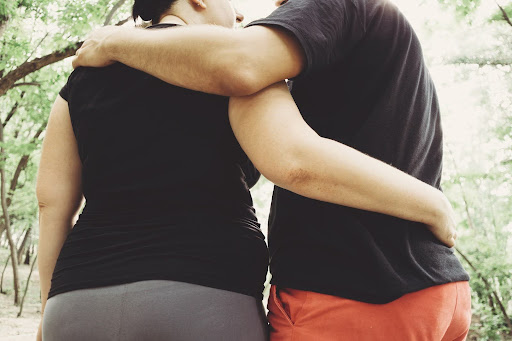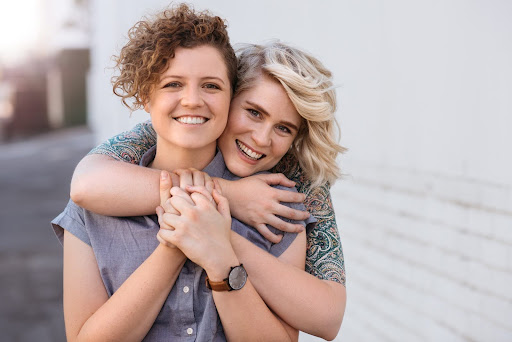I think it’s safe to say that many of us have experienced an argument in a relationship–be it a small disagreement over what brand to buy at the grocery store, or a full blown conflict that’s been building for weeks. If you haven’t, first of all, congratulations to you! Second, can you teach us your secrets?
For the majority out there that have experienced conflict, we know that it can be scary or anxiety-inducing to have your partner momentarily unhappy. Usually that leads to thoughts that race through our mind, or feelings inside that are uncomfortable that we’d really rather not feel– and then we behave accordingly. Sometimes, the ways that we choose to react do more harm than good. Then time passes and the temporary wounds heal, but when the conflict rears its head again, we’re left with a choice: react the same way we always do, or try something new.
What does Attachment have to do with this?
Let’s first take a look at what Attachment is: Attachment refers to the relational way we connect and react to others. Our own attachment style is the familiar pattern in how we interpret and express intimacy with our friends, family, and partners.

Our attachment style is most often formed by the first relationships that were present in our early development. Typically, the first relationship formed is with our parents or caregivers. We base our understanding of how to interact with one another in life from the lessons we learned in that first early relationship which are then reinforced throughout our lives.
Some of us experienced a consistent, comforting relationship, where our needs were heard and attended to. Others may have experienced a relationship where our needs were heard, but were only addressed about half of the time or less, or were addressed inconsistently. Some may have experienced little to no comfort where it was desperately needed.
Each of these relationship experiences in our development can have unique and lasting effects on the way we view relationships as adults.
That’s not to say our attachment styles are permanent– our style can change over time with new, learned, and reinforced positive experiences.
This is where our attachment style comes into play in dating and relationships. In times of conflict or high stress, our attachment systems become activated, and the modeled relationship patterns we are familiar with jump into motion. Understanding what activates our attachment system and how that system plays out can help you to make different choices in times of stress, which may ultimately improve the way you communicate and navigate conflicts within your relationship.
Let’s take a look at each of the attachment styles:
Secure Attachment
This type of attachment is often the result of an early modeled consistent and assuring relationship. This typically means that your needs were usually acknowledged and addressed, which took a lot of the stress and guesswork out of your development. In a relationship, this is shown through self-confidence, flexibility, and a comfortableness in understanding and meeting the needs of their partner and themselves.
Avoidant Attachment
This type of attachment is characterized by emotional unavailability from a caregiver– meaning they may have been present physically, but could not or would not help you learn to experience and manage emotions. In a relationship, this can look like being very independent, being emotionally closed off or resistant towards intimacy, or dismissive of conflict or repair.
Anxious Attachment
This style of attachment is typically developed by inconsistent needs management by a caregiver– sometimes the needs are addressed well, but other times the needs are unacknowledged or misunderstood. In a relationship, this may look like constant worrying or insecurity about the status of the relationship, a fear of abandonment, wanting constant reassurance or validation, or an extreme need for closeness with others.
Anxious-Avoidant Attachment:
This style is a combination of both anxious and avoidant attachment, often caused by neglect of developmental needs, or when the caregiver becomes both the source of comfort and anxiety/abuse. A person with this attachment style has learned that others are untrustworthy and can cause pain, but still want and need a closeness with others that is difficult to achieve. In a relationship, this may look like someone who sends mixed signals, fears abandonment but often lashes out, or struggles with insecurity and is generally distrustful of others.

Understanding both your partner’s attachment style and your own can help to inform why either of you are dancing that same old familiar dance. Knowing your own attachment style specifically can bring more insight into what activates your attachment system and what behaviors you choose as a result of that. Click here to learn more about attachment styles!
Now that you have an understanding of what kind of attachment you have, you can choose behaviors that will address your needs, instead of behaviors that don’t.
Say, as an example, you have an avoidant attachment style and your partner has an anxious attachment. During a stressful situation, your system is activated, and you feel the urge to distance yourself from the stressor (conflict, or an overly attached partner), which may feel temporarily relieving, but in the long run, actually moves you farther away from intimacy and comfort. It’s important here to choose to move towards the relationship, instead of away. That could look like accepting a reassuring hug from your partner, or reaching out to your partner and intentionally discussing the issue together.
This is the key to making attachment styles work: choosing behaviors that move you towards intimacy, and not away. Knowing your attachment style is a helpful clue into identifying what your triggers are, which is when you most often choose to move away.

We’re hard-wired for intimacy and closeness, and we deserve to love and be loved! Choose to move towards those needs and you will lay the foundations for a flourishing relationship.
Thought this article was relevant to you? Click here to schedule a free 15 minute consultation today to start your journey of self-discovery with our Sandy Springs counseling team.

